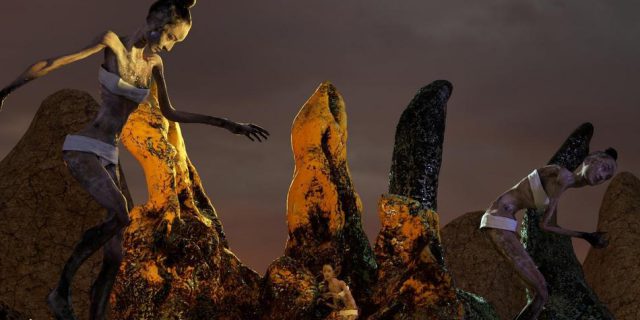16th March 2017
BlogSXSW is one of our favourite events of the year. The world renowned festival provides an opportunity to learn about the latest technologies and trends that will shape the way we see and interact with the world tomorrow. SXSW proves that the most unexpected discoveries happen when diverse topics and people come together.
This year, we sent Head of Strategy, Claire Knapp and Senior Planner, Sarah Price to the the event in Austin. Despite being exceptionally busy and wanting to see at least 4 sessions at any one time, they have promised to send us their daily highlights. Read about their favourite sessions from yesterday’s action packed day.
Another fascinating day at SXSW today, exploring the present and future role of VR and immersive experiences. We took some time today to examine the craft of VR and how each component from audio to graphics can manipulate your emotions and perceptions as an end user. Here’s some of our top highlights and key takeaways:
The impact of audio in VR visual storytelling
What happens when you put a beat boxer, a sound design architect, an audio psychologist and a film director in a room? The answer is: something really quite special. The panel explored the link between sound and emotion and how the audio of a track can actually override your visual experience and perception in film and VR. In more immersive experiences especially, audio has a real playfulness in how you interact with the story and the more traditional approach of simply overlaying a soundtrack or sound score onto a video is fatigued and predictable. The panel explored how subtle sound nuances can transport you as a viewer into the experience, so you can explore the narrative from inside the story itself. Particularly in VR, the opportunity to create a presence within the experience using the psychological power of sound (built through sound effects, score, dialogue, spatial variance and sonic storytelling) is relatively unexplored but has huge potential to not just build a better UX, but actually help drive greater uptake, emotional response and behavioural change. To see what this can look like, check out this (360 layout) video here. Prepare to be amazed and excited by the potential.
Virtual cinema
We took some time to explore the Virtual Cinema today, which is a collection of different VR experiences from the likes of NASA and Occulus. The exhibition itself was phenomenally popular, and it is this fascination with VR that really underpins the opportunity to build brand equity and share of voice. Throughout the exhibition, there was a real mix of types of experiences (passive, passive-ambient and interactive), graphics and audience engagement. From across the different set-ups, we bring to you our top tips:
Engage the audience: Without doubt, the experiences that were projecting the VR experience drew greater crowds and excitement. The difficulty with any VR experience is that it can be very isolating and individual-focused, by bringing the crowd into the interaction (even passively) helped grow the reach and impact of VR substantially.
Use your hands: Although having a range of different levels of engagement is beneficial, when it comes to involvement and prolonged engagement, the experiences that integrated hand-held controllers managed better than those where the user was simply sat viewing the experience.
Graphics matter: At the moment, anything in VR is cool and interesting, but the difference in graphics was evident and it wasn’t hard to see that we will soon be comparing today’s VR experiences with the likes of first generation gaming graphics. As an experience, those that had invested in high-end graphics managed to propel the experience from ‘cool’ to ‘impactful’.
Sound is fundamental: Potentially this bled out of our first talk, but the quality and application of sound was a real eye-opener. Most experiences had simple background sounds, but with a more sophisticated approach, the immersion into VR could be phenomenal – this is especially true as VR headsets are looking to create more integrated sound/headphones.
Group learning: With clear ‘gamification’ and ‘behavioural economics’ benefits, the idea of group interaction within the VR world was a really interesting angle that holds huge opportunity. This format instantly takes the experience away from isolated engagement and helps drive greater reach and effectiveness.
Outside of VR: Brain. Behaviour. Story
Over the centuries, the study of behaviour has been extensive and ever-changing. Particularly in the current political climate, there has been a real focus on how to change the belief and behaviour of individuals. Some key principles to remember when trying to apply behavioural science to your campaigns are:
- People make decisions based on emotions not rationale thinking (for proof, check out Damasio)
- People believe what they want to believe, so to change attitudes, we must frame the attitudinal shift to be in their interest
- People are attached to their beliefs, so you must disentangle their self-image/identity from their attitude and re-direct this attachment to the underlying motivation
- Science (unfortunately even fake science) works
- Fictional stories have been shown to drive greater change than real-life stories
- People engage more with the story of a single individual than the collective view
- Social proofing works, so sharing the opinion of their peers can be hugely effective
- The use of ‘convert’ influencers has huge impact
